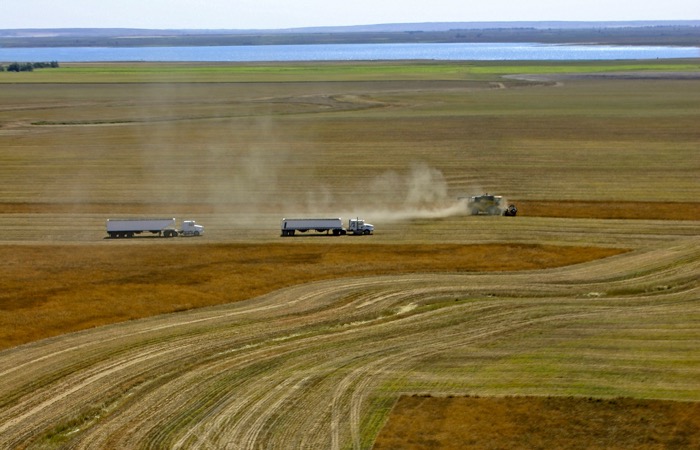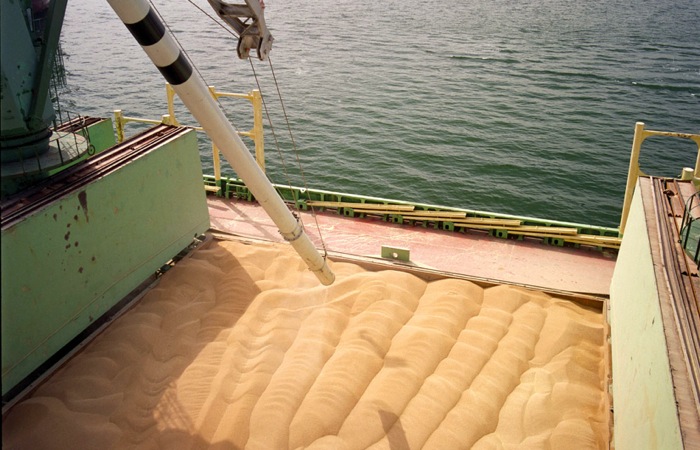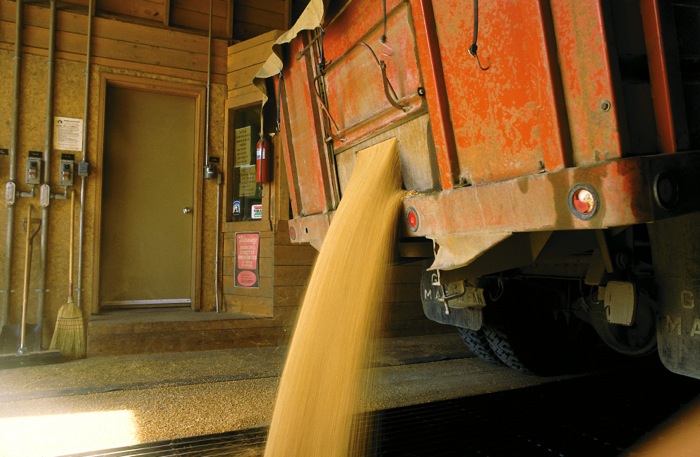With current wheat basis levels, are we being ripped off?
This is a question many farmers have asked over the past couple of years, since the demise of the Canadian Wheat Board as a central marketing agency, and even more so this last year when we saw basis levels go to historically wide levels due to weather and market problems across the Prairies.
Let’s review the situation with wheat as it was and as it is today to shed some light on what a basis is and how it should work in today’s marketplace.
Read Also

Gentle treatments for pain in the neck
Heading toward year-end, people unknowingly tense up against the cold and busyness, causing neck pain that can often be treated with appropriate support and gentle mobility, athletic therapist Kathlyn Hossack says.
Back when the CWB was “The Single Desk Seller” of wheat, you were provided with a pooled basis. This pooled basis was determined by the CWB, taking into consideration what they believed their costs to market and sell wheat would be for that particular pooling period. They would average the cost over time and offer farmers the average basis. Seeing as the CWB had the monopoly control to sell the wheat there was no immediate competition, so the CWB did not need to adjust its basis very often, if at all, during the pooling periods.
The CWB controlled the flow of grain through contract acceptance. Grain companies would take the grain in if they had space and, or when they had shipping for that grain. They would buy the grain from the farmer on the CWB’s behalf, and the CWB paid the grain companies storage for holding the grain in their facilities until it was shipped. The grain companies did not have cash tied up buying CWB grains as they were reimbursed relatively quickly by the CWB, once inventory and purchase reports were filed. They made money by handling and storing grains for the CWB, which was a big part of their revenues each year.
The new world
Since the demise of the monopoly powers of the CWB, we now have numerous grain companies competing with one another to sell the grains they buy. They are also competing against one another to buy grain from you to meet their sales. Which company is successful in the bid to fill a sale will play a big part in what you see for basis levels at elevator facilities in the country.
How has this impacted wheat basis levels and why?
Basis has moved from being a relatively static number based on an averaging of sales costs in a pooling environment to being the gate keeper to control the flow of grains in and out of our grain handling system.
What do I mean by that?
In today’s world, grain companies must take ownership of the grain and put up their own cash to buy wheat from farmers to fill the sales that they have made. They don’t get paid for storage when they’re holding grain, like they used to from the CWB. These factors add risk and costs to the grain companies’ bottom lines.
To best manage their cash flow, sales needs and facility space utilization, grain companies need to control the flow of grain they buy through managing the basis levels they offer farmers.
If grain companies don’t have sales to fill they don’t need to buy grain from farmers —this will just eat into their cash flow and take up space in their facilities. The best way for them to discourage farmers from selling grain is to widen out the basis to the point where farmers refuse to sell. Conversely if they need grain to meet a sale they will narrow the basis to attract deliveries to cover their sales commitments.
Grain companies will use basis to help protect them against future potential sales. If futures markets are rallying but grain companies don’t have sales to fill, they will widen their basis out to stop farmers from selling — they don’t want to own grain in a rally if they aren’t sure they can sell it later for a profit. If farmers still sell at those high basis levels, then the grain companies are making extra margin to protect themselves in the event that they end up selling the grain later into a lower priced market.
Grain companies buy and sell wheat based on U.S. wheat futures markets. The only way they can differentiate themselves from one another when buying grain is to vary their basis levels.
Look at the basis
Reviewing basis levels regularly will tell you a number of things.
If the nearby (sooner) basis is better than the forward (further in the future) basis, that is telling you there is an immediate need for grain to meet sales now.
If the nearby basis is worse than the forward basis, the nearby needs have been filled and they want you to contract grain for future delivery when they have sales to fill.
If there is a wide variability in the basis levels offered by different grain companies, that is often due to the fact that one company has made a sale and another company did not. Or one company’s sale is a lower price, so they must set their basis accordingly to fill those sales.
There will always be some variability in basis levels between companies and/or different delivery points within a company due to rail freight rates and handling charges.
Where things can get confusing is when you are comparing basis levels between companies. They sometimes quote different grades, making it hard to compare apples to apples.
Most grain companies use No. 1 CWRS 13.5 per cent as their base pricing grade while others use No. 1 CWRS 13 per cent or No. 2 CWRS 12.5 per cent or 13 per cent as their base pricing grades.
To compare properly, you need to ask for the current grade and protein spreads, then do some quick math to be able to see who is offering the best basis and thus the best price. Or, ask them all to give you a price for the same grade and protein and save yourself the math exercise.
Basis levels: fair?
So to answer the original question, no, I don’t think you are being ripped off on wheat basis. There is enough competition out there to keep grain companies adjusting basis levels constantly as their sales and the markets dictate.
Basis now truly reflects what is happening in the market place. Watching basis levels closely and locking them in when they’re at attractive levels is the best way to keep from being forced to lock in a poor basis when they widen out. Grain companies may try to extract more profit by widening out their basis but competition and your due diligence to monitor basis levels will keep them in line.
Last winter’s historically wide basis levels were spurred on by a number of factors that came together in a perfect storm. Cold weather stalled out the rail transportation system which put grain companies at risk of not meeting sales commitments or losing future sales, plus paying demurrage costs on waiting vessels.
To protect themselves, they widened out the basis or refused to take deliveries until they felt they could continue doing business as usual. Basis did eventually come back down to more traditional levels after a few months, which shows that the marketplace is competitive.
It’s just unfortunate that the situation caused so much angst for so many across the entire industry. All we can do is hope we don’t experience a similar situation and that we’re better prepared to manage such a situation should it happen again.
















